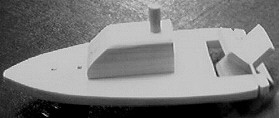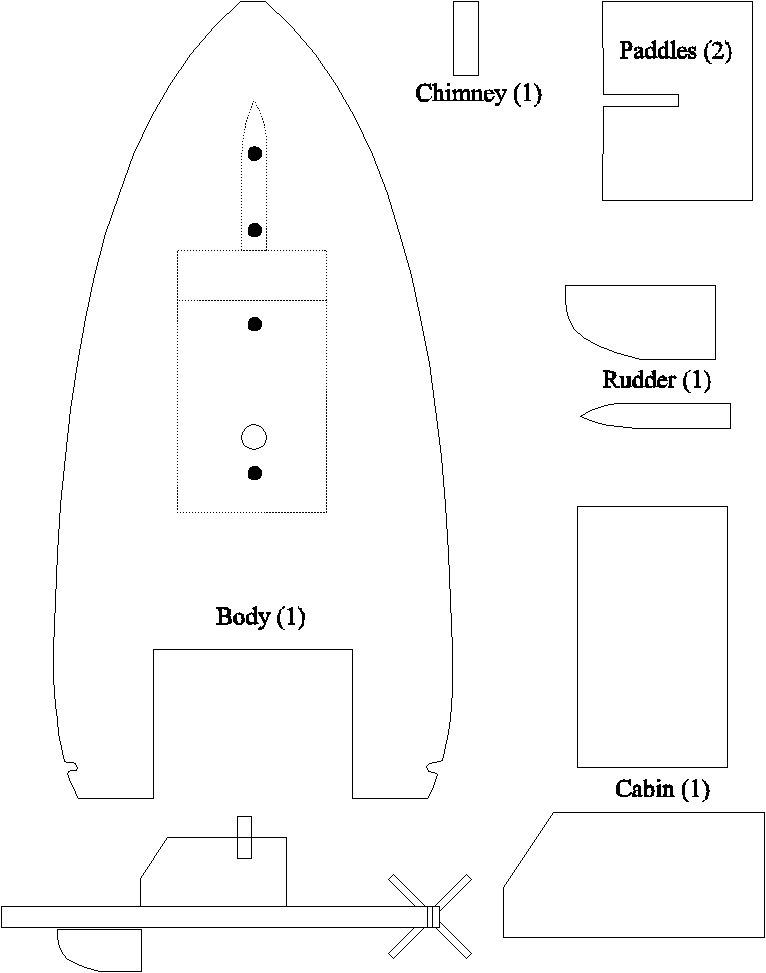
| |||
| Use the diagram to cut out all pieces to the desired sizes. The rudder is optional but it helps the boat steer better. If you are making multiple boats, use a thick stock, such as a 2x4, for the body then resaw it into several 1/2" thick parts. Drill a 1/2" deep 1/4" diameter hole, for the chimney, into the top of the cabin as shown in the drawing. Cut the groove into the paddle pieces. It should be of a width equal to the thickness of the paddles and go half-way through. Drill four pilot holes (slightly smaller than the nail width) for the nails. The chimney is cut from a 1/4" dowel. Now all your Junior Woodcrafter needs is these six parts, one rubber band, seven 1" finishing nails (two for spares), a hammer, some wood glue, one sheet of 150 grit sandpaper, and safety goggles. | |||
| Assembly. A. Drive two finishing nails, for the cabin, into the bottom of the body where the black dots on the drawings indicate. B. Drive the nails to the point they are about to go completely through or 'ever so slightly through' the wood. C. Apply glue to the bottom of the cabin and position it onto the top of the body. D. Hammer the two nails all the way in. E. Sand the front edge of the rudder to tapered shape but not quite to a sharp edge. F. Drive two finishing nails, for the rudder, into the top of the body where the black dots on the drawings indicate. G. Again, drive the nails to the point they are about to go completely through or 'ever so slightly through' the wood. H. Apply glue to the top of the rudder and position it onto the bottom of the body. I. Hammer these two nails all the way in. J. Place a dab of glue into the hole in the top of the cabin and glue the chimney into place. K. Test fit the two paddle pieces together and sand to fit if needed. J. Assemble and glue the two paddle pieces together. K. Sand all corners and edges round. L. Place the rubber band over the paddlewheel and hook it into the notches in the rear of the body. M. Allow all glue and paint to dry overnight. N. Wind the paddlewheel (backwards) then place it in water and let go. |






No comments:
Post a Comment
Through these open doors you are always welcome